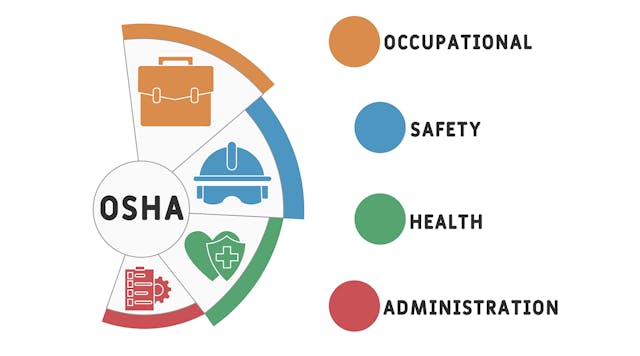Public Citizen and 111 other safety and labor groups recently called on the Occupational Safety and Health Administration (OSHA) to create a federal standard for protecting workers from heat stress, which they say is aggravated by global warming.
Whether or not OSHA chooses to respond to this call by proposing a standard some time in the future, it still obligates employers to develop programs that adhere to OSHA-recommended practices.
“OSHA has an obligation to prevent future heat-related injuries, illnesses and fatalities by issuing a heat stress standard for outdoor and indoor workers,” the organizations said in a late April letter to Alexander Acosta, secretary of U.S. Department of Labor (DOL), and Loren Sweatt, Deputy Assistant Secretary of Labor and chief of OSHA.
More than 815 U.S. workers were killed and 70,000 seriously injured by heat stress between 1992 and 2017, the advocates note, citing the Bureau of Labor Statistics. This is likely an underestimate, they added, asserting that many injuries and illnesses are underreported in the U.S., especially in the sectors employing vulnerable and often undocumented workers.
They also pointed out that heat is not always recognized as a cause of heat-induced injuries or deaths and can be easily misclassified, because many heat-related symptoms overlap with other more common diagnoses.
OSHA currently issues citations to employers based on the general duty clause, a part of federal safety law that requires employers to maintain a safe workplace even in the absence of regulations and standards targeting specific safety practices. The agency for years also has engaged in a public education campaign aimed at employers laying out specific steps for them to take to address heat dangers.
However, the advocates argue that most employers will not implement practices to prevent heat stress unless required to do so. “A federal heat stress standard would help to prevent countless illnesses and deaths caused by heat, benefiting workers and employers alike,” they said. “In its absence, rising temperatures are projected to cause an increase in heat-related workplace illness, a dramatic loss in labor capacity, decreased productivity, and an increase in workers compensation and hospital-related costs.”
The states of California, Minnesota and Washington—along with the U.S. military—already have established standards for heat exposure, the advocates note. They further explain that in general all states with approved occupational safety and health programs are required to have standards “at least as effective” as federal standards.
NIOSH Suggests Standards
Public Citizen also observed that the National Institute for Occupational Safety and Health (NIOSH) already has developed criteria for a possible federal standard for occupational exposure to heat and hot environments, specifically covering recommended engineering and administrative controls and personal protective equipment (PPE).
The NIOSH-recommended standards include:
● Reducing physical demands of the work by using powered assistance for heavy tasks.
● Helping workers acclimate to high temperatures by gradually increasing exposure to hot conditions over 7–14 days.
● Scheduling new workers for no more than 20% of the usual duration of work in a hot environment on the first day with no more than a 20% increase each day.
● Encouraging water intake at frequent intervals to prevent dehydration (1 cup every 15–20 minutes).
● Providing a shaded and/or air-conditioned space nearby.
● Monitoring workers for complicating conditions such as alcohol ingestion, diarrhea and low-grade infections.
● Cooled air, cooled fluid or ice-cooled clothing, and reflective clothing or aprons for workers in hot industrial environments.
In its letter, Public Citizen pointed to an Occupational Safety and Health Review Commission decision earlier this year vacating an OSHA citation brought against an employer under the General Duty clause citing the lack of a federal heat standard. The commission said, “The [Labor] Secretary’s failure to establish the existence of an excessive heat hazard here illustrates the difficulty in addressing this issue in the absence of an OSHA standard.”
The advocates’ letter urged the agency to adopt the course of action that Public Citizen and 130 other organizations sought in a petition filed last summer. “OSHA has a single acceptable course of action in response to this decision: promulgate a heat standard to put employers on notice of what they must do to protect workers and enforce the standard.”
Current Obligations Stand
OSHA is continuing to investigate and issue citations to employers based on the General Duty clause and it is not likely to back down any time soon simply because of the lack of a specific standard.
“OSHA investigates these heat-related incidents and complaints to their fullest. As such, it is important to review your company’s heat-related safety and hazard prevention and heat identification to ensure it complies with OSHA, especially early in the season,” says attorney Wes Gerrie of law firm Goldberg Segalla LLP.
The situation can turn out to be particularly serious in the spring, when hot weather arrives suddenly early in the season before workers have had a chance to adapt to warm weather, he warns.
An employer with workers who could be exposed to hot environments must establish a heat illness prevention program to satisfy OSHA. The agency has said that such a program should include:
● Training all employees and supervisors on heat illness prevention.
● Providing enough fresh water for each employee and encouraging them to drink.
● Providing access to shade and encouraging employees to take a cool‐down rest in it; they should not wait until they feel sick to cool-down.
● Closely observing all employees and monitoring for signs of illness.
● Allowing new or returning workers to gradually increase workloads and take more frequent breaks as they acclimate to, or build a tolerance for, working in the heat.
● When possible, creating engineering controls such as air conditioning and ventilation which is not only a preventative measure, but can be used to assist in emergency situations as well.
● Developing and implementing written procedures, specific to the worksite, for heat illness prevention, including plans on how to handle medical emergencies and steps to take if someone shows signs or symptoms of heat illness.
● Planning for emergencies and training workers on prevention, including any of the previous written procedures.
● Documenting any and all training, discussions and emphasis on heat-related prevention, training and safety.
● Overall, OSHA’s message is “Water. Rest. Shade.” Ingrain this slogan in your workers’ minds during pre-work meetings.
“In the end, although OSHA does not have a specific standard that covers working in hot environments, employers nevertheless have a duty to protect workers from recognized serious hazards in the workplace, including heat-related hazards,” Gerrie says.










































































